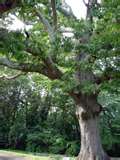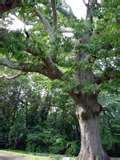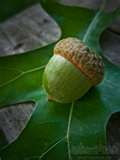Tree Study

Trees are the giants of the plant world.They are a large element of beauty in the landscape. Trees have always had a large influence on man’s existence and development.
Trees should be studied as flowering plants, they have the same organs and functions.
In studying trees it is to your advantage to select one tree and observe it year ’round. In selecting this tree, be aware that it is a living thing with a life and needs of its own, similar to our own. In one way it differs from us greatly is that it is stationary, and it has roots and a trunk instead of legs and a body. It has to wait to have its needs come to it instead of being able to search for them. It is fun to give a name to your tree that you will study throughout the seasons.
Tree parts
The head or crown is composed of the branches as a whole, also the larger and smaller twigs and branches. The outer twigs are called the spray, which are the smallest division of the trunk. The spray is the part that bears the leaves and fruit.
The body of the tree is called the trunk or bole. It is actually the stem of the tree. The bole has two jobs to do. It holds the branches up, rising up to a height so that its head can expose the leaves to sunlight. It is also a channel by which the sap comes up from the root to the leaves and back down again. The branches are divisions of the trunk and do the same work.

The bole at the base divides into roots and the roots into rootlets, which are covered with root hairs. The roots have two different jobs to do. First, they absorb the water and minerals from the soil and second they hold the tree in place. There is as much of the tree hidden below the ground as there is above. The part below the ground is much different in shape. It is flatter and in a more dense mass. The roots travel as they grow in search of water.
Each of the tree’s anatomy carries out a job to help to keep the tree alive.
The trunk has an outside layer of protective bark. Next to this, is the cambium layer which is the vital part of the trunk. The cambium layer, builds on the outside, a layer of bark and on its inside a layer of wood around the trunk. Within the cambium layer is a lighter colored portion of the trunk, which is called the sapwood because it is filled with sap. The sap moves up and down its cells in a mysterious way, as it nourishes the tree. Within the sapwood are concentric rings to the very center or pith of the tree. This portion is usually darker in color and is called the heartwood. It no longer has anything to do with the life of the tree, but is gives to it strength.
The larger branches, when cut crosswise, show a similar structure to the trunk: the bark on the outside, the cambium layer and the rings of annual growth.
The leaves are on the outermost parts of the tree. A leaf would be of little value if it could not be reached by the sunlight. Therefore, the trunk lifts the branches up and the branches hold the twigs far out and up. The twigs divide into the fine spray, so as to spread the leaves and hold them out into the sunshine. In structure, the leaf is made up of the petiole and the blade, or widened portions of the leaf, which is sustained usually with a frame work of many ribs or veins. The petioles and veins are sap channels like the branches and twigs.

